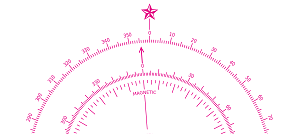BlueSeas
Marine HF-SSB Distress Frequencies
MF/HF-SSB Radio - Distress, Urgency,
Safety, & Hailing Frequencies
The International Telecommunication Union (ITU,) the same organization that sets international regulations and treaties governing Marine VHF usage is also responsible for the Marine Medium and High Frequency spectrum. The intent is to provide the maritime radio communications user with a group of standard distress, safety, hailing, and working frequencies that are known to all mariners and can be used worldwide.
In the medium and high frequency bands (2) of the most common distress communications types are voice radio and Digital Selective Calling (DSC) alerts with DSC becoming the preferred method of initiating distress communications before switching over to voice communications.
When using DSC, the simple push of the distress alert button on a MF/HF-SSB radio that is tied into a GPS, you automatically transmit all the information needed to initiate a search or response to an emergency situation aboard your vessel. When the situation allows, the use of both DSC and voice communications in combination is the preferred method and will probably result in a faster response.
Distress, Safety and Hailing Frequencies
The following MF & HF marine radio frequencies have been set aside by the ITU as Distress, Urgency, Safety, and Hailing frequencies. These frequencies are internationally accepted and can be used for ship to shore and ship to ship hailing, broadcasting of marine safety information, and sending distress calls. They are guarded by most nations of the world and these frequencies will be found pre-programed into all newer MF/HF-SSB Marine Radios.
Voice Guard Frequencies
| International MF/HF Voice Distress, Urgency, Safety, & Hailing | |||
|---|---|---|---|
| Ship Transmit | Ship Receive | Simplex/Duplex | USB/LSB |
| 2182.0 kHz | 2182.0 kHz | Simplex | USB |
| 4125.0 kHz | 4125.0 kHz | Simplex | USB |
| 6215.0 kHz | 6215.0 kHz | Simplex | USB |
| 8291.0 kHz | 8291.0 kHz | Simplex | USB |
| 12290.0 kHz | 12290.0 kHz | Simplex | USB |
| 16420.0 kHz | 16420.0 kHz | Simplex | USB |
| All distress, safety and hailing frequencies are simplex and (USB) only. | |||
DSC Guard Frequencies
| International MF/HF DSC Distress, Urgency, Safety, & Hailing | ||||
|---|---|---|---|---|
| Ship Transmit | Ship Receive | Corresponding Voice Frequency |
Simplex/Duplex | USB/LSB |
| 2187.5 kHz | 2187.5 kHz | 2182.0 kHz | Simplex | USB |
| 4207.5 kHz | 4207.5 kHz | 4125.0 kHz | Simplex | USB |
| 6312.0 kHz | 6312.0 kHz | 6215.0 kHz | Simplex | USB |
| 8414.5 kHz | 8414.5 kHz | 8291.0 kHz | Simplex | USB |
| 12577.0 kHz | 12577.0 kHz | 12290.0 kHz | Simplex | USB |
| 16804.5 kHz | 16804.5 kHz | 16420.0 kHz | Simplex | USB |
| Once a DSC alert has been acknowledged, the corresponding voice frequency is then used for voice communications. | ||||
International MF/HF Distress Frequencies - Download
USCG Official Notice of 2 MHZ Distress Frequency Guard USCG 2MHz Distress Frequency Notice.
Upon Receipt of a Distress Call
This would be a good time for the mariner to review the actions that should be taken if you receive a DSC Distress Alert.
VHF & MF-SSB DSC Distress Actions

HF-SSB DSC Distress Actions

The above flow diagrams are available for download for either VHF/MF DSC or HF DSC.
VHF/MF DSC Distress Alert Flow Diagram - Download
HF DSC Distress Alert Flow Diagram - Download
Distress Listening Watch
Most seafaring nations maintain a watch on some if not all international distress frequencies. The major change being that more and more of these nations have abandoned maintaining a voice watch in lieu of maintaining a DSC only watch. This trend is likely to continue into the future, until at some point only DSC guards will be maintained on the DSC distress frequencies.
Because of this transition away from voice watches, it behooves the offshore mariner who depends on HF-SSB for communications to become intimately familiar with the alert and calling functions of their DSC radios.
